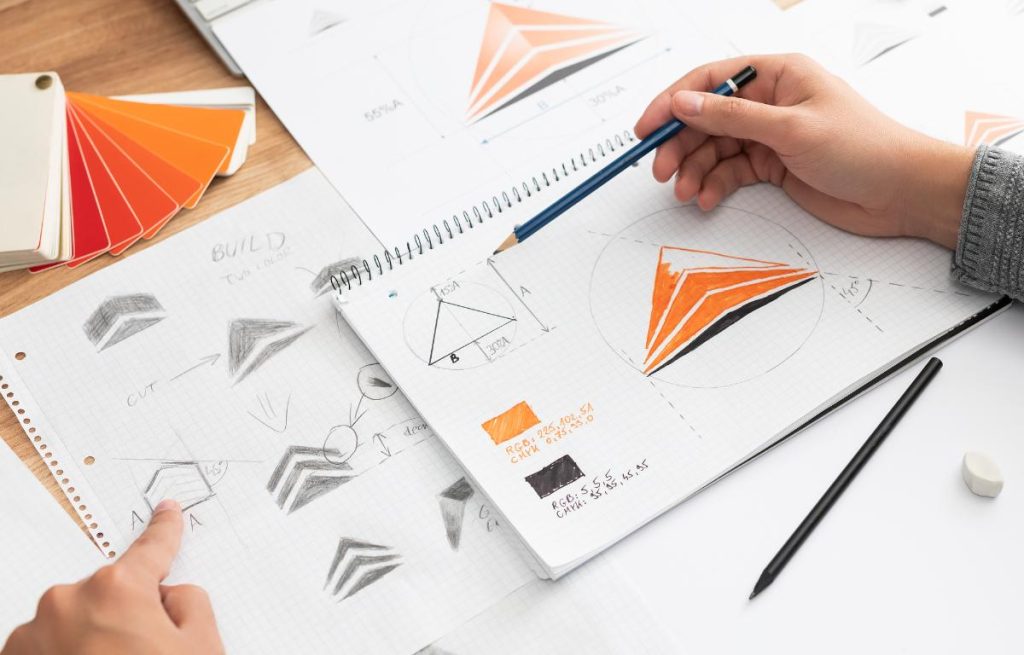Logos aren’t just designs; they’re the heartbeats of brand identity, instantly communicating who you are and what you stand for to the world. In today’s digital era, creating a logo doesn’t have to be a task reserved for professional designers. Thanks to various free online tools, designing your logo has never been more accessible. Whether you’re bootstrapping a startup or looking to refresh an established brand, these tools offer the ease and flexibility needed to craft a logo that resonates with your business’s ethos without breaking the bank. Seize the chance to share your brand’s narrative with a logo customized to fit the unique needs and scale of your business, crafted completely from the ground up.

Define Your Brand Identity
Understanding your brand’s core values, mission, and target audience is crucial before designing your logo. These elements are the compass that guides the aesthetics and message of your logo. Consider creating a mind map to visualize and organize these thoughts. This technique helps distill what makes your brand unique and ensures that every design choice reflects these unique qualities. Think about what sets your brand apart and how you want your brand to be perceived in the competitive market. Engaging deeply with these foundational aspects of your brand will lay the groundwork for a logo that truly stands out and speaks directly to your target audience.
Find Inspiration
Starting your logo design with inspiration is a great way to get the creative juices flowing. To gather ideas, dive into logo libraries like those available on design platforms, which showcase a variety of styles and trends. Don’t forget to check out what your competitors are doing; seeing how they represent themselves can spark ideas on differentiating your brand. Search for design-related hashtags on platforms like Instagram or Pinterest for a real-time look at what’s trending and what resonates with audiences today. This broad range of sources will inspire you and help you understand the vast landscape of logo design, enabling you to decide what could work best for your brand.
Choose Your Logo Type and Style

When designing your logo, the type and style you choose will be critical in how your brand is perceived. Here are some common types and styles to consider:
Types of Logos:
- Wordmark: A logo made of fonts that emphasizes only the name of the company. Ideal for individuals wanting a sleek and minimalistic appearance.
- Monogram: Logos designed with initials are ideal for businesses using their abbreviations as their brand identity.
- Combination Mark: These logos incorporate both a wordmark and a symbol, allowing for versatility in usage.
- Emblem: These are often more detailed and include text inside a symbol, like badges or seals.
- Abstract: These feature unique, abstract forms that convey your brand’s values without relying on a recognizable image.
Styles of Logos:
- Classic: Timeless and straightforward, avoiding trends to ensure longevity.
- Vintage: Evokes nostalgia with retro fonts and classic imagery, suitable for brands wanting a long-established feel.
- Modern: Sleek and minimal, using current design trends for a fresh, contemporary look.
- Fun: Playful and often colorful, great for brands targeting young audiences or wanting to appear approachable.
- Handmade: Often textured and intricate, ideal for artisanal brands emphasizing craftsmanship.
Understanding these types will help you select one that best aligns with your brand’s personality. This will ensure that your logo not only looks good but also communicates the right message and evokes the intended emotions.
Sketch Initial Concepts
Before diving into digital tools, sketch your logo ideas on paper. This traditional method is invaluable for visualizing different concepts and exploring various design directions without constraints. Sketching is a fantastic brainstorming technique that allows you to freely experiment with shapes, layouts, and elements that can embody your brand’s identity. This hands-on approach can help you solidify your ideas and make decisions more intuitively, providing a clear direction for when you move to digital creation. The benefits of sketching include flexibility in exploring multiple designs rapidly and refining these sketches into a final concept that feels right for your brand.
Select Colors and Fonts
Picking the correct color scheme and typography is essential for creating a visually appealing and effective logo on different platforms and devices. Colors can convey emotions and attract specific audiences, so select hues that reflect your brand’s personality and values. Use tools like a color wheel to find complementary colors that enhance visual harmony. For fonts, focus on readability and character. Make sure that the fonts you select are readable in various sizes and on different backgrounds to improve brand recognition. Think about using fonts that are easy to read and visually appealing in both print and digital mediums.
Use Free Design Tools

Use online design tools such as Canva, LogoMakr, and Hatchful by Shopify to animate your logo. Additionally, Adobe offers a free logo generator which is particularly helpful if you’re looking to craft something unique with professional flair. These platforms are easy to use and provide a variety of tools to design logos that look professional. Here’s how to use these tools effectively:
- Start with a Template: Choose a template that closely matches your vision from these tools’ extensive libraries.
- Customize: Use the drag-and-drop features to add or adjust elements such as icons, shapes, and text to suit your brand.
- Experiment: Play with color schemes and font combinations to see what works best for your logo.
Each tool has unique features, so take the time to explore and utilize the options available to perfect your design.
Refine and Finalize
Once you have a draft, the refinement process begins. Solicit feedback from potential customers, partners, or friends to gain different perspectives on your logo’s effectiveness and appeal. Use this feedback to make adjustments—this might include tweaking colors, altering fonts, or simplifying elements to ensure the logo works well across digital, print, and merchandise mediums; this iterative process is crucial in logo design, as continuous refinement helps achieve a polished, professional outcome that resonates well with your audience. Finalize your design confidently, knowing it’s been refined to best represent your brand.
Legal Considerations
When finalizing your logo design, it’s crucial to consider legal protections to safeguard your brand. Perform an extensive search to determine if your logo is available for trademark registration and does not violate any existing trademarks. This is a necessary measure to prevent possible legal conflicts and financial responsibilities. Additionally, consider copyrighting your logo to protect your rights over its design. These legal precautions ensure you can use and promote your logo freely, enhancing your brand’s integrity and value without legal repercussions.
You now have a roadmap to design a logo that encapsulates your brand’s essence using free online tools. From understanding your brand identity and drawing initial sketches to selecting the right colors and fonts and utilizing digital tools for refinement, each step is designed to guide you toward creating a logo that looks professional and deeply resonates with your target audience. Remember, your logo is a powerful visual statement about your brand’s identity and values. Embrace this creative process as an empowering journey to define your business’s visual identity. Let your logo be a beacon that proudly tells your brand’s story to the world.
